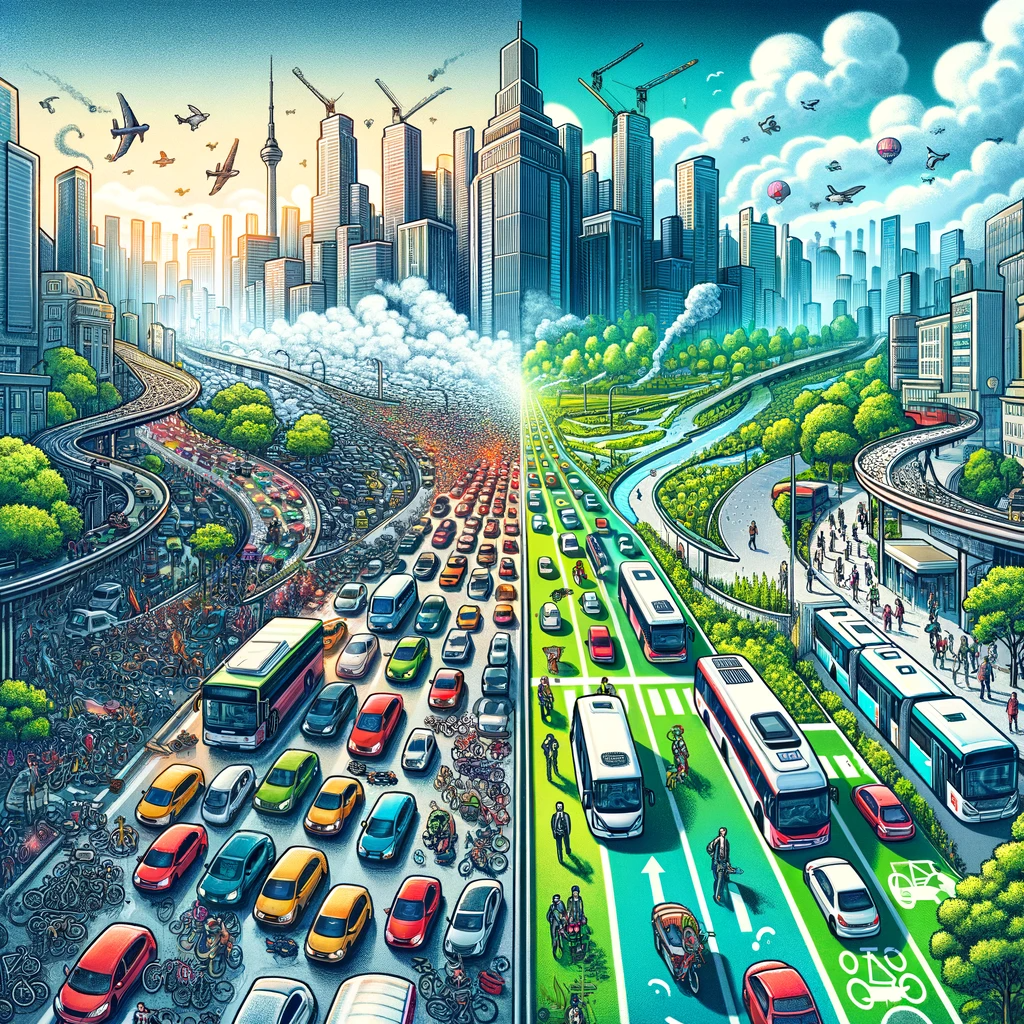Traffic congestion is a familiar foe in the daily lives of millions, paralyzing urban centers, frustrating commuters, and challenging city planners worldwide. As the arteries of city transportation become clogged with vehicles, understanding the causes of these blockages and exploring effective solutions is essential for reclaiming our streets and our time. This in-depth analysis delves into the multifaceted nature of traffic congestion, shedding light on its underlying causes and highlighting innovative strategies to alleviate the urban transportation crisis.

The Heart of the Matter: Understanding Congestion
At its core, traffic congestion is the result of an imbalance between the demand for road space and its available supply. Various factors contribute to this imbalance, including rapid urbanization, population growth, and the increasing reliance on personal vehicles. The allure of convenience and privacy offered by personal cars often outweighs the perceived limitations of public transportation, leading to an excessive number of vehicles vying for limited urban road space.
Urban Sprawl: A Catalyst for Congestion
Urban sprawl, characterized by the spread of a city and its suburbs over more rural land, exacerbates traffic congestion. As residential and commercial areas move further apart, the necessity for longer commutes increases, putting additional strain on transportation infrastructure. This sprawl not only lengthens travel times but also makes it more challenging to provide efficient public transportation options.
The Economic and Environmental Toll
The impact of traffic congestion extends beyond mere inconvenience, bearing significant economic and environmental costs. Prolonged congestion leads to wasted fuel, increased greenhouse gas emissions, and considerable loss of productivity as commuters spend hours trapped in traffic. The health implications are also profound, with air and noise pollution contributing to various health issues among urban residents.
Paving the Way Forward: Solutions to Traffic Congestion
Enhancing Public Transportation
A robust, efficient, and user-friendly public transportation system is key to mitigating traffic congestion. By providing viable alternatives to personal vehicle use, cities can significantly reduce the number of cars on the road. Investments in buses, subways, and light rail systems, coupled with affordable pricing and convenient schedules, can make public transportation a preferred choice for commuters.
Embracing Smart Technology
Smart transportation solutions, leveraging the power of technology, offer promising avenues to tackle congestion. Intelligent Traffic Systems (ITS) utilize sensors, AI, and data analytics to optimize traffic flow, manage demand, and provide real-time information to commuters. From adaptive traffic signals to congestion pricing and smart parking solutions, technology can significantly alleviate urban gridlocks.
Promoting Sustainable Modes of Transport
Encouraging the use of sustainable transportation modes like cycling and walking is not only good for the environment but also effective in reducing congestion. Developing dedicated bike lanes, pedestrian zones, and greenways can make these alternatives safer and more appealing, thereby reducing the reliance on cars for short distances.
Urban Planning and Policy Measures
Strategic urban planning and policy interventions can address the root causes of congestion. Implementing zoning laws that encourage mixed-use developments can reduce the need for long commutes. Policies promoting carpooling, telecommuting, and flexible work hours can also play a crucial role in decreasing peak-hour traffic.
Conclusion
Traffic congestion is a complex challenge that requires a multifaceted approach. By understanding its causes and implementing a combination of solutions, from improving public transportation to leveraging smart technology and promoting sustainable travel, cities can pave the way towards a more efficient, less congested future. The journey towards smoother urban transportation is a collective effort, requiring the collaboration of policymakers, city planners, and the community at large.

